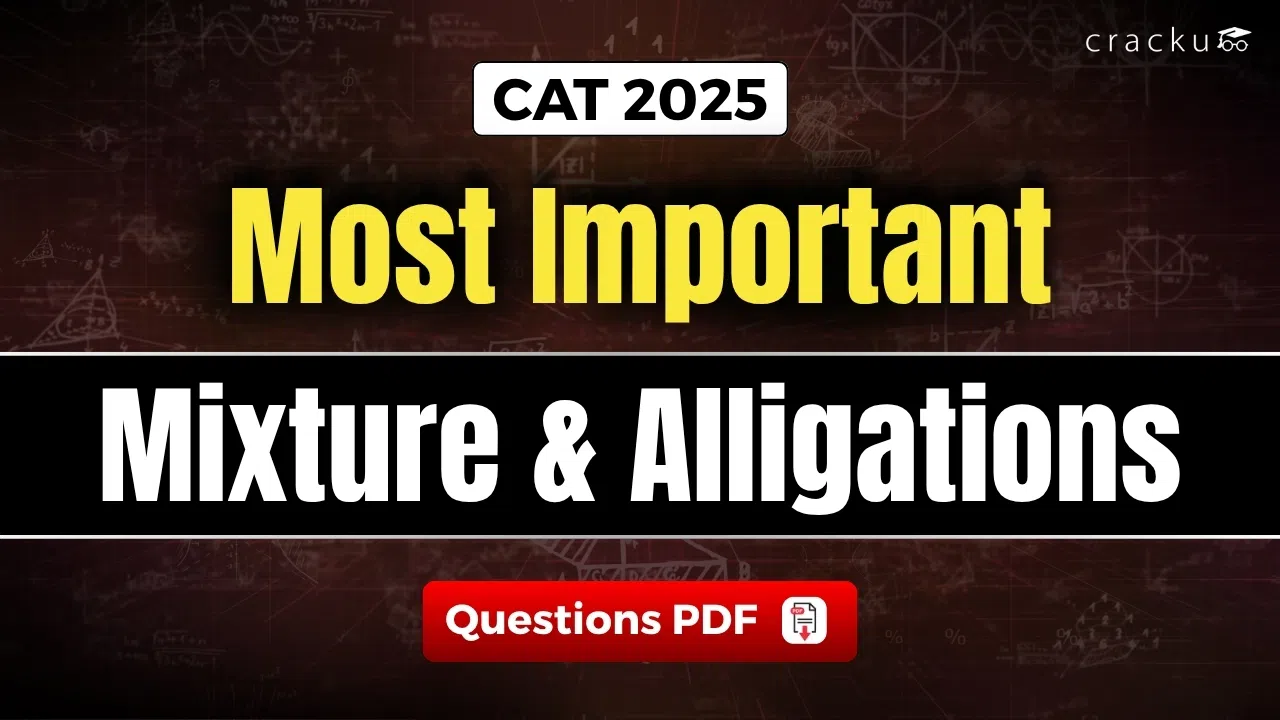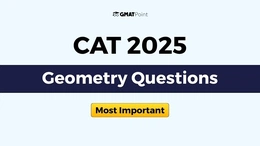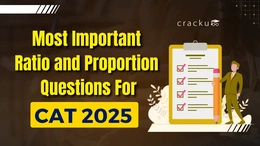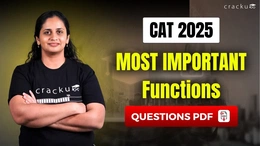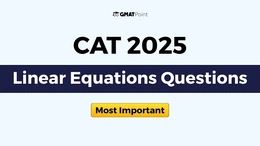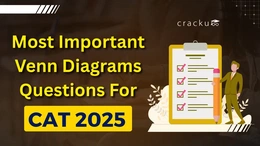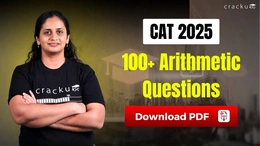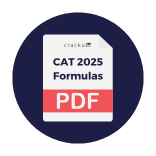CAT Mixture & Alligations Questions for CAT 2025
Mixture & Alligation is an important topic in the CAT Quant section. Most of the questions from this chapter are easy to solve if you know basic concepts like ratios and concentration. To help you learn this topic better, we are giving a FREE Mixture & Alligation Questions PDF with video solutions.
Download the PDF, practice regularly, and use the videos to understand the right method and improve your accuracy.
Download CAT Mixture & Alligation Questions PDF
Improve your CAT Quant score with this FREE Mixture & Alligation Questions PDF. It includes CAT important questions based on the latest CAT exam pattern, along with clear solutions and helpful video explanations. Download it now and start practising every day to improve speed and accuracy!
CAT Mixture & Alligation Formula PDF
Here we have shared the most important Mixture & Alligation formulas in a simple and easy-to-understand way. These formulas will help you solve mixture questions quickly and without confusion in the CAT exam. You can also download the free formula PDF so you can revise the concepts anytime while practicing.
Common Mistakes to Avoid While Solving CAT Mixture & Alligation Questions
CAT Mixture & Alligation questions look simple, but small mistakes can lead to wrong answers. Make sure you avoid these common errors in the exam:
- Wrong Base for Percentage: Always check what the percentage is calculated on — total mixture or one component.
- Not Simplifying the Ratio: If you get a ratio like 12:8, reduce it to 3:2. CAT answer options are usually in simplest form.
- Incorrect Use of Alligation Rule: The final value (mean) must be between the two given values. If it is not in between, the formula will not work.
- Errors in Removal & Replacement: When some part of the mixture is removed and replaced, the total quantity stays the same, only the composition changes.
- Using Shortcuts Without Understanding: Shortcuts work only if your basics of ratios and percentages are clear. Don’t apply them blindly.
Also Read, CAT 2025 Expected Questions PDF with Video Solutions
How to Use the CAT Mixture & Alligation PDF + Video Bundle Effectively
To get the best results, follow these simple steps:
- Revise the Formulas First: Go through the formula sheet and highlight the ones you find difficult.
- Solve the PDF Under Time Limit: Try to attempt the 100+ questions like a mini-mock (example: 20 questions in 30 minutes). Avoid watching the video first — try on your own.
- Watch Video Solutions After the Test: Check the videos for questions you got wrong or took too much time. Write down the trick or method used.
- Keep an Error Notebook: Note down where you made mistakes, whether it’s a concept, calculation, or reading error. This helps you avoid repeating the same mistakes.
- Revise Weekly: Every weekend, solve a few questions from your error notebook again.
- Practice in Full Mocks: Add 5–10 Mixture & Alligation questions in every CAT mock test so that you can handle them confidently during the actual exam.
List of CAT Mixture & Alligations Questions for CAT 2025
Question 1
If a certain weight of an alloy of silver and copper is mixed with 3 kg of pure silver, the resulting alloy will have 90% silver by weight. If the same weight of the initial alloy is mixed with 2 kg of another alloy which has 90% silver by weight, the resulting alloy will have 84% silver by weight. Then, the weight of the initial alloy, in kg, is
correct answer:- 3
Question 2
Two liquids A and B are in the ratio 5 : 1 in container 1 and 1 : 3 in container 2. In what ratio should the contents of the two containers be mixed so as to obtain a mixture of A and B in the ratio 1 : 1?
correct answer:- 4
Question 3
A certain amount of water was poured into a 300 litre container and the remaining portion of the container was filled with milk. Then an amount of this solution was taken out from the container which was twice the volume of water that was earlier poured into it, and water was poured to refill the container again. If the resulting solution contains 72% milk, then the amount of water, in litres, that was initially poured into the container was
correct answer:- 30
Question 4
Two alcohol solutions, A and B, are mixed in the proportion 1:3 by volume. The volume of the mixture is then doubled by adding solution A such that the resulting mixture has 72% alcohol. If solution A has 60% alcohol, then the percentage of alcohol in solution B is
correct answer:- 3
Question 5
Ankita buys 4 kg cashews, 14 kg peanuts and 6 kg almonds when the cost of 7 kg cashews is the same as that of 30 kg peanuts or 9 kg almonds. She mixes all the three nuts and marks a price for the mixture in order to make a profit of ₹1752. She sells 4 kg of the mixture at this marked price and the remaining at a 20% discount on the marked price, thus making a total profit of ₹744. Then the amount, in rupees, that she had spent in buying almonds is
correct answer:- 1
Question 6
A mixture contains lemon juice and sugar syrup in equal proportion. If a new mixture is created by adding this mixture and sugar syrup in the ratio 1 : 3, then the ratio of lemon juice and sugar syrup in the new mixture is
correct answer:- 4
